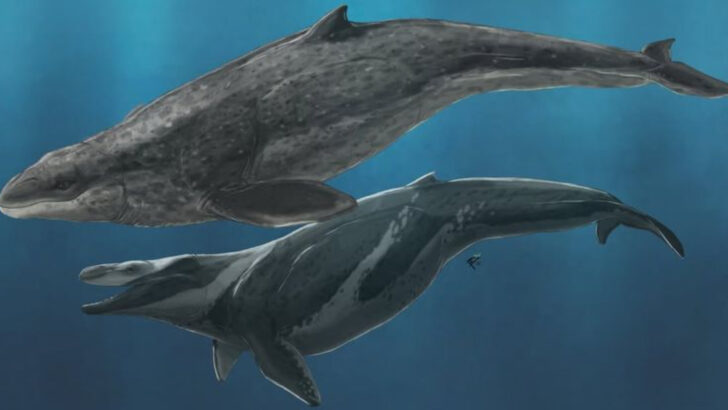Today’s whales are massive, no doubt—but they’re not the weirdest ones to ever swim the oceans. Long before the blue whale claimed the title of biggest animal on Earth, the seas were home to creatures that were not only huge but also surprisingly strange. Some had teeth more like a T. rex than a modern whale. Others looked like something straight out of science fiction.
Many of these extinct species left behind only bits of bone and a whole lot of questions. Paleontologists are still piecing together what they looked like, how they behaved, and why they vanished. What’s clear, though, is that ancient whales came in forms far more diverse—and in some cases, more jaw-dropping—than the ones we know today.
Basilosaurus
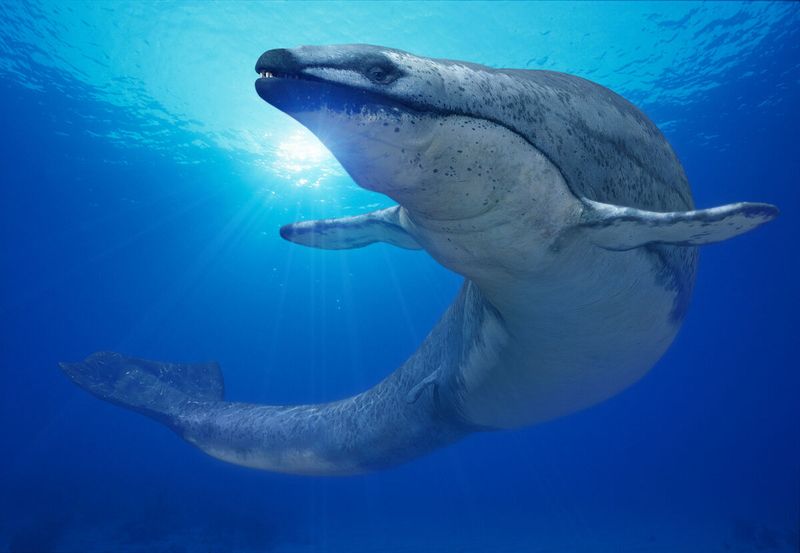
Basilosaurus, often mistaken for a dinosaur due to its size and name, was a giant prehistoric whale that lived approximately 34 to 40 million years ago. Growing up to 60 feet in length, this marine mammal was a top predator of its time. Its elongated body and massive jaws filled with sharp teeth made it a formidable hunter.
Unlike modern whales, Basilosaurus had a more serpentine appearance. Fossils indicate it was not a fast swimmer, relying instead on ambush tactics. Discoveries of stomach contents reveal a diet consisting mainly of fish and smaller marine mammals.
Gigantotherium
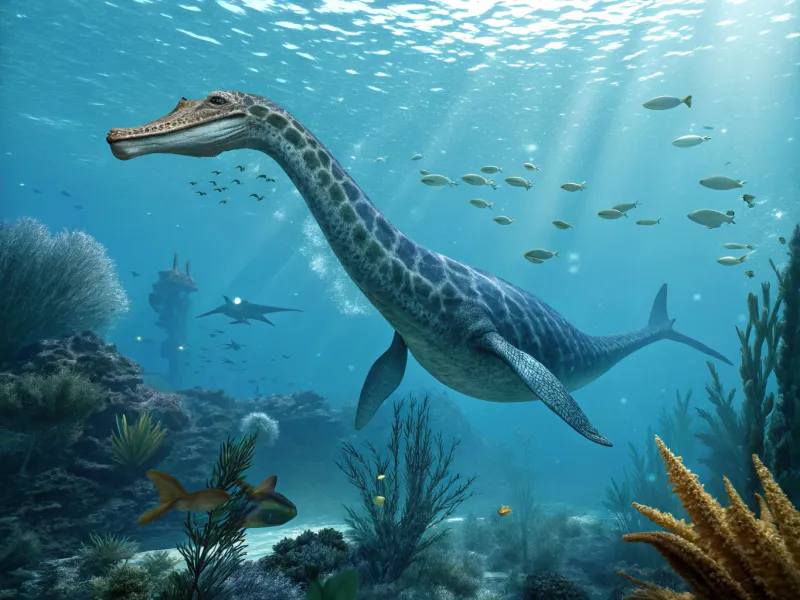
Imagine a whale with the neck of a giraffe and the body of a blue whale. Meet Gigantotherium, a behemoth of the ancient seas. Its elongated neck allowed it to reach vast quantities of plankton, its primary diet. Despite its size, Gigantotherium was a gentle giant, gliding through the ocean with grace.
In fossils, its intricate skin patterns were preserved, hinting at a majestic presence. Some speculate that its neck might have served a dual purpose: feeding and attracting mates. A true marvel of evolution, Gigantotherium leaves a lasting impression.
Leviathan melvillei
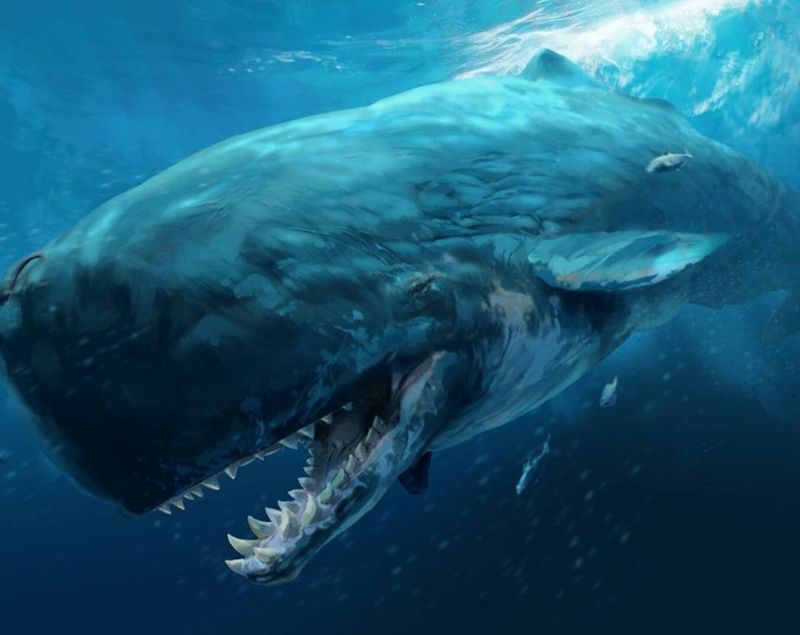
Named after the biblical sea monster and author Herman Melville, Leviathan melvillei was a colossal predator of the Miocene epoch, about 13 million years ago. It could reach lengths of 57 feet, comparable to the modern sperm whale but with much larger teeth.
These massive teeth, some over a foot long, allowed Leviathan to prey on other whales. Fossil evidence suggests fierce competition with Megalodon, another giant predator of the time. Its impressive size and hunting capabilities make Leviathan melvillei a particularly intriguing extinct whale.
Thalassocetus
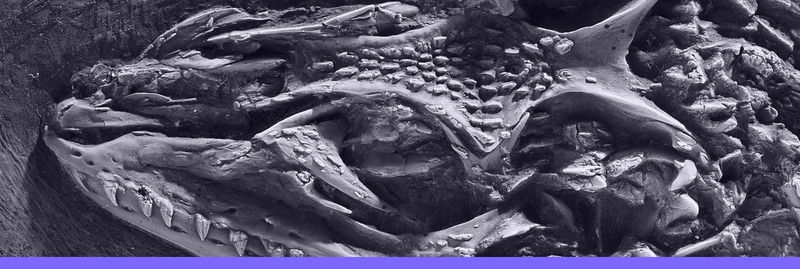
In the deep-sea, Thalassocetus stood out with its armored body. Resembling a stegosaurus, this whale had bony plates along its back. These plates likely provided protection against predators.
Thalassocetus was not just about defense; its unique structure hints at an intriguing evolutionary path. Paleontologists believe these features might have been used in mating displays.
A creature of mystery, Thalassocetus challenges our understanding of whale evolution, showing how diverse and innovative nature can be. Its legacy invites curiosity and wonder about the ancient world.
Zygophyseter
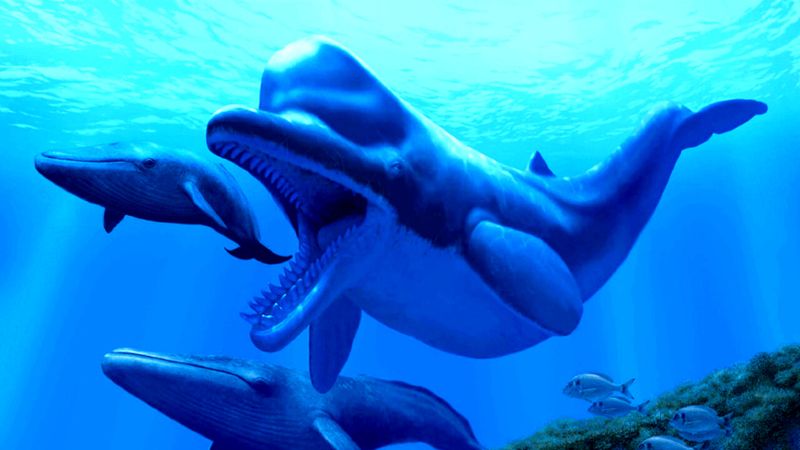
Zygophyseter, also known as the “killer sperm whale,” lived during the Miocene, around 11 to 7 million years ago. Reaching lengths of up to 23 feet, it shared similarities with today’s sperm whales but was much more aggressive.
Zygophyseter’s large, predatory head housed strong jaws with sharp teeth, enabling it to hunt large marine animals effectively. Its hunting prowess and speed set it apart from its modern relatives. Fossil records indicate that this fearsome predator was a top oceanic hunter of its era.
Colossocetus
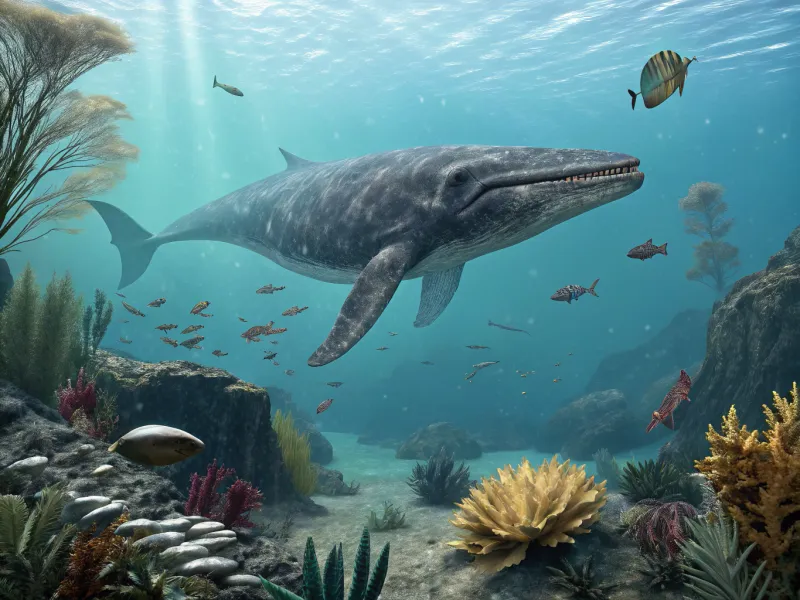
With tusks reminiscent of an elephant, Colossocetus was a formidable presence. These tusks, protruding from its mouth, were both a tool and a weapon. Primarily, they helped in breaking ice or digging through sand for hidden prey.
Colossocetus was a master of its environment, adapting with remarkable skill. Its tusks might also have been used in displays of dominance within groups.
An embodiment of strength and adaptability, Colossocetus paints a picture of an ancient ocean teeming with life and competition. Its story is one of survival and ingenuity.
Cetotherium
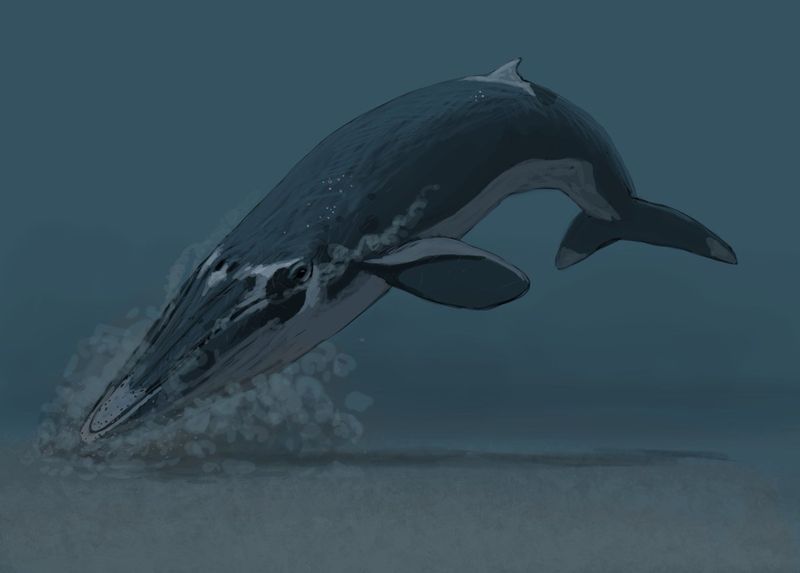
Cetotherium was a genus of baleen whales that thrived during the late Miocene and Pliocene epochs, approximately 10 to 3 million years ago. Unlike many of its larger counterparts, Cetotherium was medium-sized, reaching up to 20 feet in length.
It possessed baleen plates instead of teeth, used for filtering small organisms from the water. This whale’s streamlined body and specialized feeding adaptations highlight the diversity of whale evolution. Despite its smaller size, Cetotherium played a crucial role in its ecosystem, indicating a rich marine environment.
JanJucetus

JanJucetus, an early whale from the Oligocene epoch, about 25 million years ago, was a unique predator of its time. Measuring around 10 feet, it was relatively small compared to other ancient whales.
Its short jaw and sharp teeth suggest a diet of fish and squid. Unlike baleen whales, JanJucetus retained primitive features, resembling more a dolphin or porpoise. Its agility and quickness in the water were key to its survival in the dynamic oceanic ecosystem of its era. This whale represents an evolutionary step in the transition from land to sea.
Ambulocetus
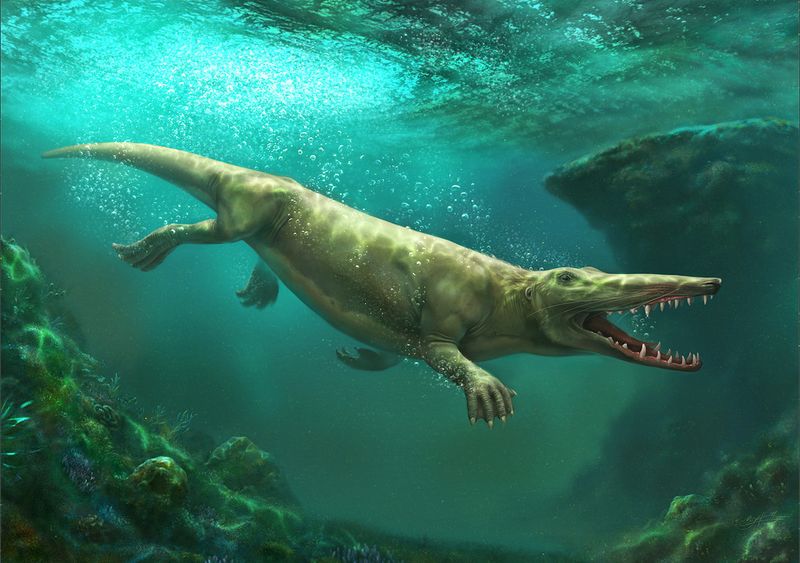
Ambulocetus, known as the “walking whale,” lived approximately 48 million years ago during the Eocene epoch. This remarkable creature could move both on land and in the water, bridging the evolutionary gap between land mammals and modern whales.
Growing up to 10 feet in length, Ambulocetus had strong legs and webbed feet for swimming. It likely hunted like a crocodile, using stealth and ambush tactics to capture prey. Discoveries of Ambulocetus fossils have provided invaluable insight into the early stages of whale evolution, showcasing the transition from land to aquatic life.
Dorudon
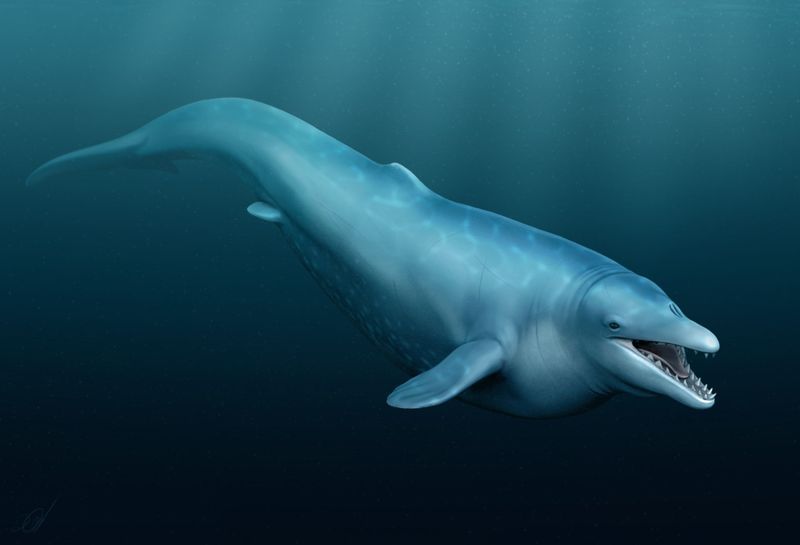
Dorudon was a smaller, yet significant, prehistoric whale that lived around 41 to 33 million years ago. Often found in association with Basilosaurus, Dorudon reached about 16 feet in length and displayed a more streamlined body.
Unlike Basilosaurus, Dorudon had a more modern whale-like appearance, with a well-developed fluke and fins. It likely fed on small fish and squid, playing an essential role in the marine food chain. The study of Dorudon fossils has aided in understanding the evolutionary transition to fully aquatic whales, making it a key figure in paleontological research.
Pakicetus
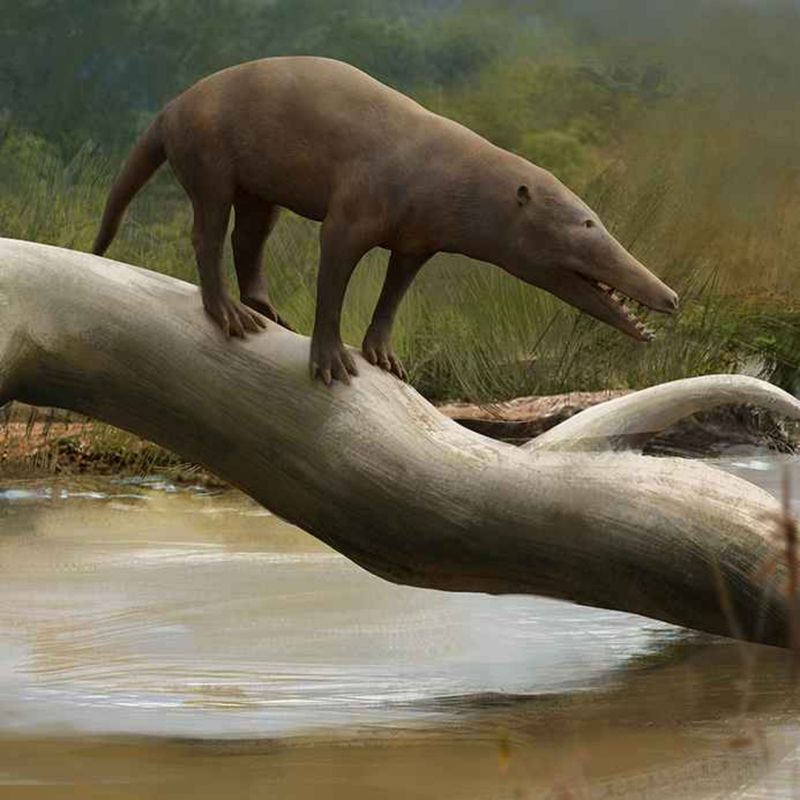
Pakicetus represents one of the earliest known whales, living about 50 million years ago during the Eocene epoch. Unlike modern whales, Pakicetus had a primarily terrestrial lifestyle, with limbs adapted more for walking than swimming.
Its ears were adapted for underwater hearing, a significant step towards aquatic life. Despite its small size, comparable to a wolf, Pakicetus marks the inception of the cetacean lineage. The discovery of Pakicetus fossils provided crucial evidence of the land-to-sea transition, offering a glimpse into the evolutionary journey of whales from terrestrial to marine environments.
Squalodon
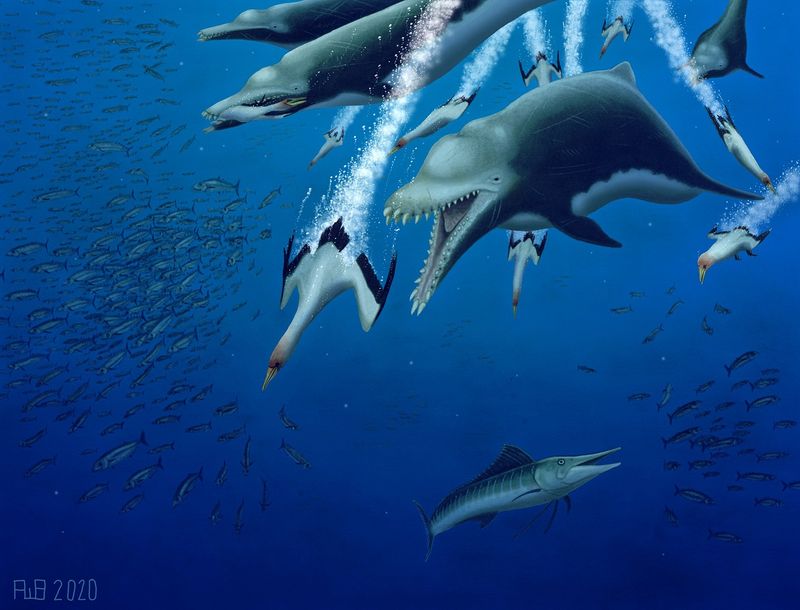
Squalodon, a genus of prehistoric toothed whales, existed from the Oligocene to the Miocene epoch, approximately 33 to 14 million years ago. Known for their distinctive, serrated teeth, Squalodon whales were among the early ancestors of modern-day dolphins and porpoises.
Growing up to 10 feet in length, they combined features of both dolphins and early whales, with a long snout and sharp teeth adapted for hunting fish. Squalodon’s fossils illustrate the evolutionary path of cetaceans, bridging the gap between ancient and modern toothed whales. Their adaptability highlights the diversity of prehistoric marine life.
Aetiocetus
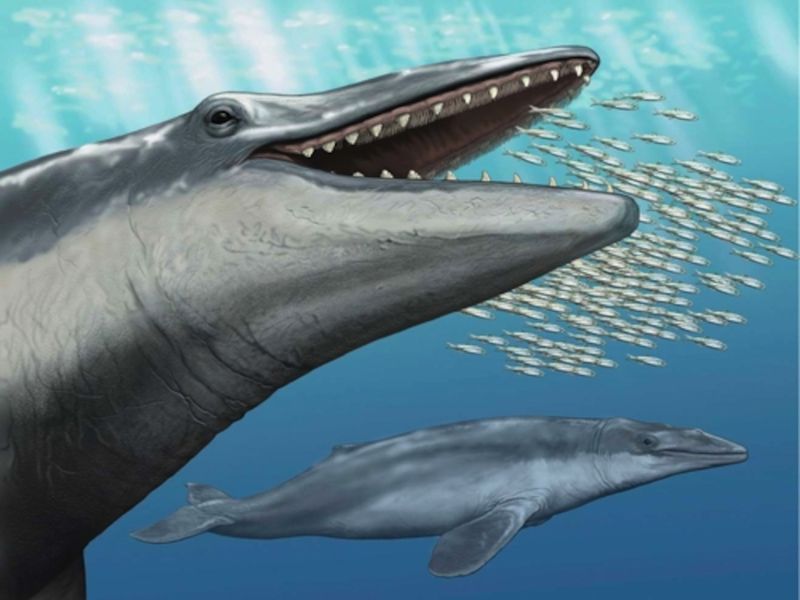
Aetiocetus, an ancient whale from the Oligocene epoch, about 25 million years ago, is an example of evolutionary transition. It displayed both teeth and baleen, suggesting a diet that included fish and plankton.
Measuring around 12 feet, Aetiocetus illustrates the shift from toothed to baleen whales, a significant evolutionary development. Its fossils have been found in the Pacific Northwest, offering insights into the marine environments of that time. The dual feeding adaptations of Aetiocetus mark a crucial point in the complexity and adaptability of ancient whales.
Toothed Mysticete
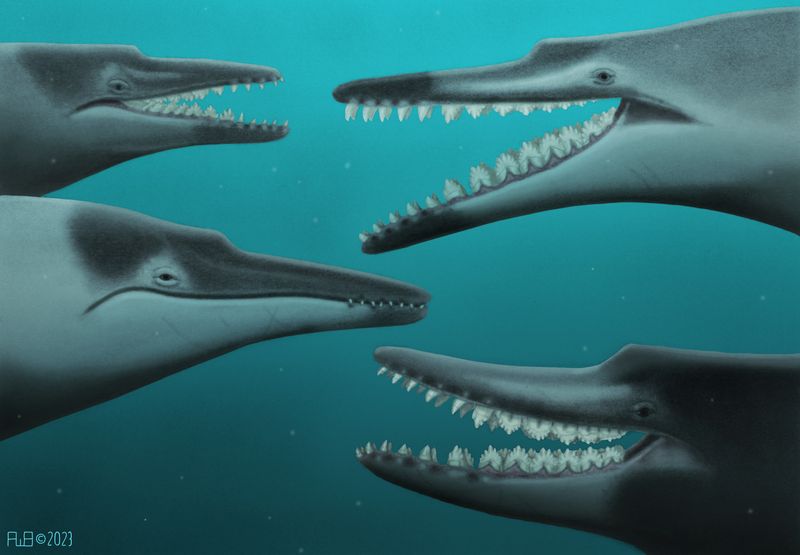
The Toothed Mysticetes were ancient whales that exhibited a fascinating blend of characteristics from both toothed and baleen whales. They lived during the Oligocene epoch, around 30 million years ago.
These whales possessed teeth while also having structures that suggest filter feeding, marking a transitional phase in whale evolution. Growing up to 20 feet in length, Toothed Mysticetes demonstrate the evolutionary experimentation of early whales. Their fossil records provide insight into the adaptive pathways that led to the bifurcation between toothed and baleen whales, illuminating the complex history of cetacean development.
Remingtonocetus
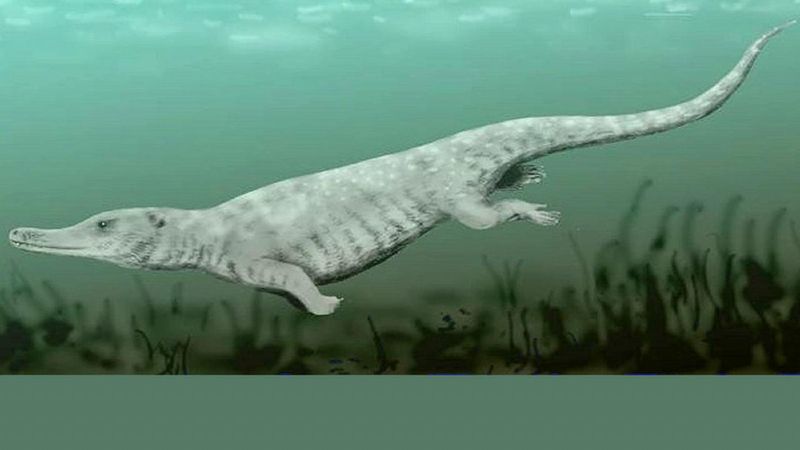
Remingtonocetus is one of the early proto-whales from the Eocene epoch, about 45 million years ago. With an elongated body and robust limbs, it represents a stage in the transition from land-dwelling to fully aquatic whales.
Growing up to 10 feet, Remingtonocetus had a distinctive snout and a strong tail, aiding in swimming. Its fossils, primarily discovered in South Asia, reveal a creature that lived in shallow coastal waters, hunting fish and other prey. The study of Remingtonocetus contributes to the understanding of early whale adaptations and the movement from terrestrial to aquatic habitats.
Maiacetus
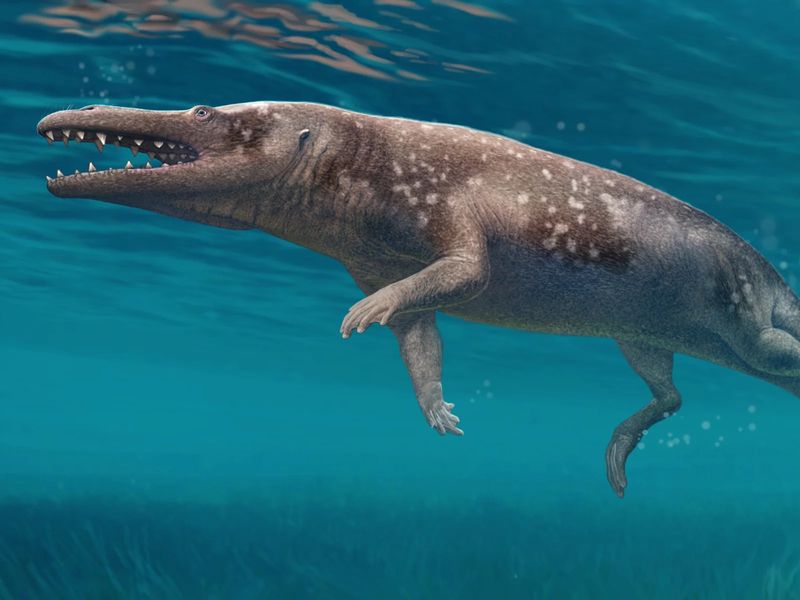
Maiacetus, an intriguing early whale from the Eocene epoch, about 47.5 million years ago, showcases the versatility of early cetaceans. Known as the “mother whale,” fossils have been discovered with a fetus inside, highlighting reproductive behaviors.
Measuring around 9 feet, Maiacetus had strong limbs, capable of supporting its body on land. It likely lived both on land and in water, hunting fish and crustaceans in coastal regions. The discovery of Maiacetus fossils has provided valuable insight into the life strategies of ancient whales, illustrating the complex evolutionary journey from terrestrial to aquatic life.
Rodhocetus
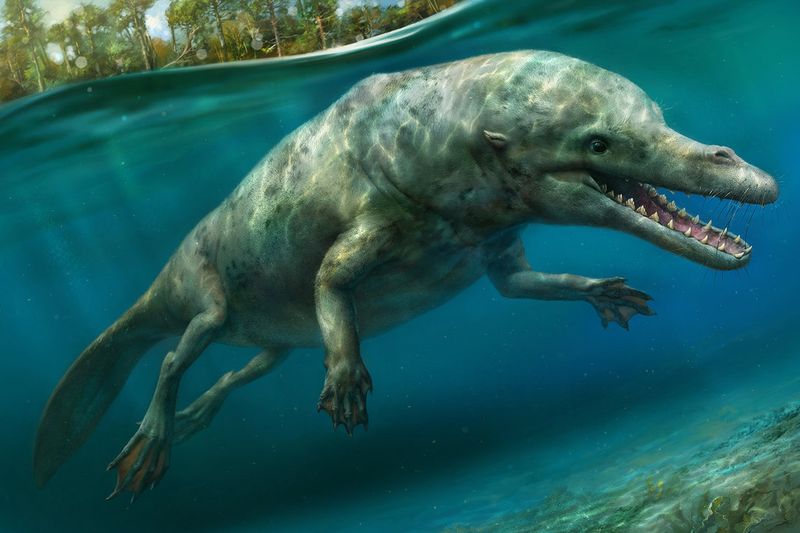
Rodhocetus, a middle Eocene whale, lived approximately 47 million years ago and signifies a crucial step in whale evolution. With a body length of about 10 feet, it had a streamlined shape well-suited for an aquatic lifestyle.
Rodhocetus possessed strong limbs, indicating it could likely move on land as well as in water. Its fossils, mostly found in Pakistan, show adaptations for swimming, such as a long tail and flexible spine. The evolutionary significance of Rodhocetus lies in its transitional features, bridging the gap between fully terrestrial and fully aquatic cetaceans, enhancing our understanding of early whale evolution.
Protocetus
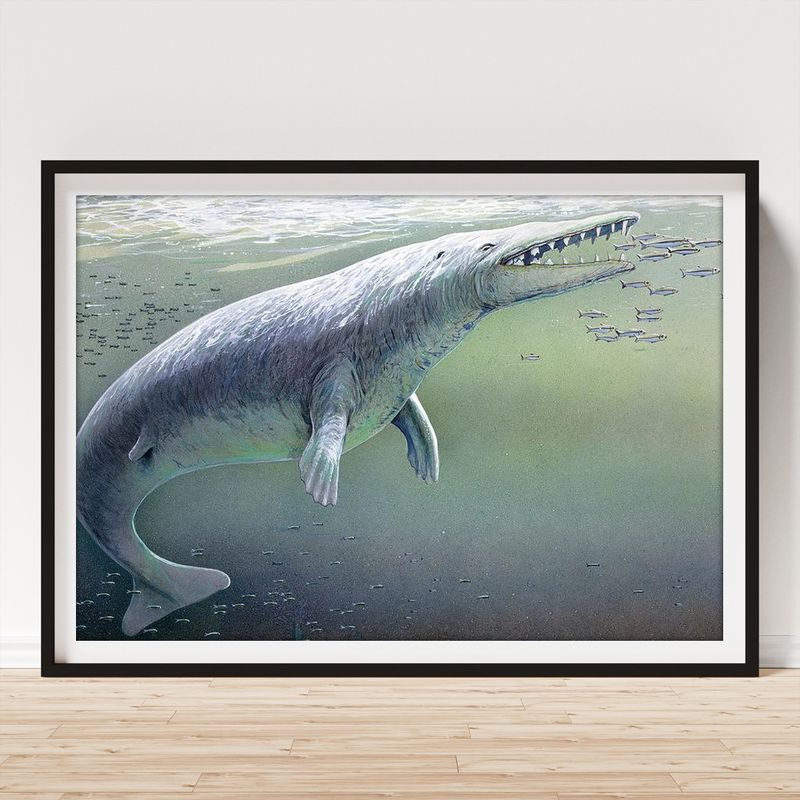
Protocetus, an ancient whale from the Eocene epoch about 45 million years ago, represents a pivotal point in cetacean evolution. Measuring around 8 feet, it displayed features suitable for both land and water.
Its streamlined body and powerful tail suggest adept swimming abilities, while its limbs indicate potential movement on land. Protocetus fossils have been primarily found in Egypt, offering a glimpse into the diverse marine life of that period. The discovery of Protocetus adds to the understanding of early cetacean adaptations, illustrating the gradual shift from terrestrial to aquatic environments in ancient whales.
Georgiacetus
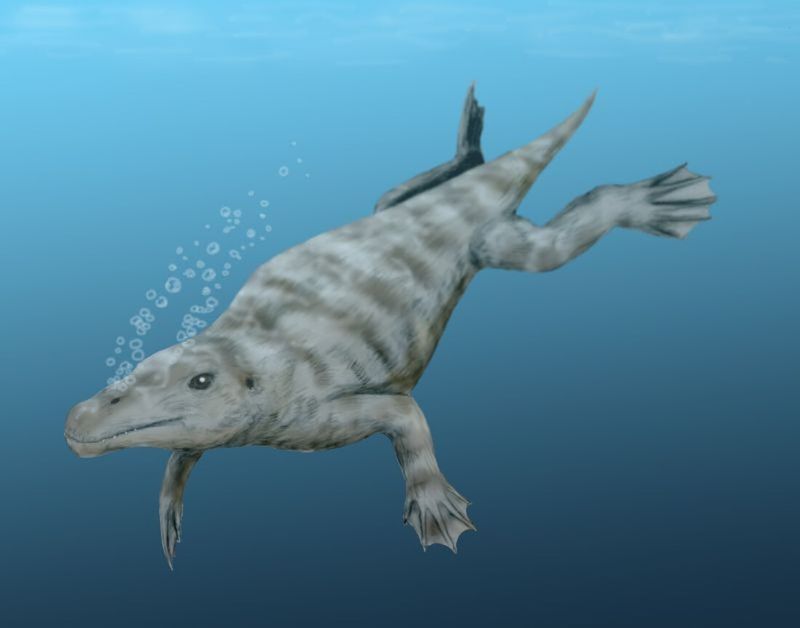
Georgiacetus lived during the late Eocene, approximately 40 million years ago, and is known for its transitional features. With an estimated length of up to 10 feet, it showcases characteristics of both land and aquatic mammals.
Its elongated skull and robust limbs suggest it was well-adapted to life in the water, yet retained some abilities for terrestrial movement. Fossils primarily found in North America provide insights into the evolutionary journey of whales. Georgiacetus exemplifies the adaptations necessary for survival in both environments, marking an important phase in the history of cetacean development.
Aegicetus
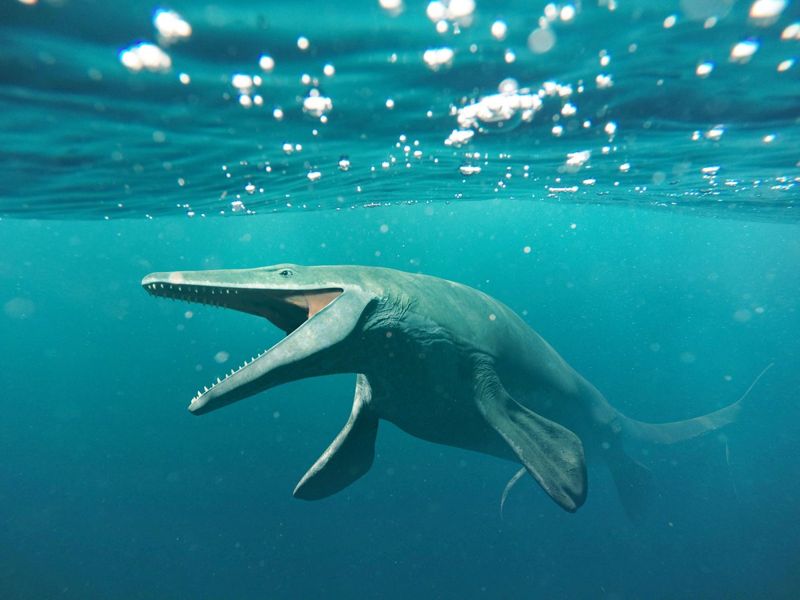
Aegicetus, an early whale from the late Eocene epoch, approximately 40 million years ago, highlights the transitional phase in whale evolution. Reaching lengths of up to 12 feet, Aegicetus had an elongated body and a streamlined shape.
It showcased a mix of aquatic adaptations, such as a powerful tail for swimming, alongside remnants of limb structures suitable for land. Fossils primarily discovered in Egypt reveal its role in the dynamic ecosystems of that time. Aegicetus contributes to the understanding of the evolutionary progression from terrestrial mammals to fully aquatic whales, enriching the narrative of cetacean history.
Mystacodon
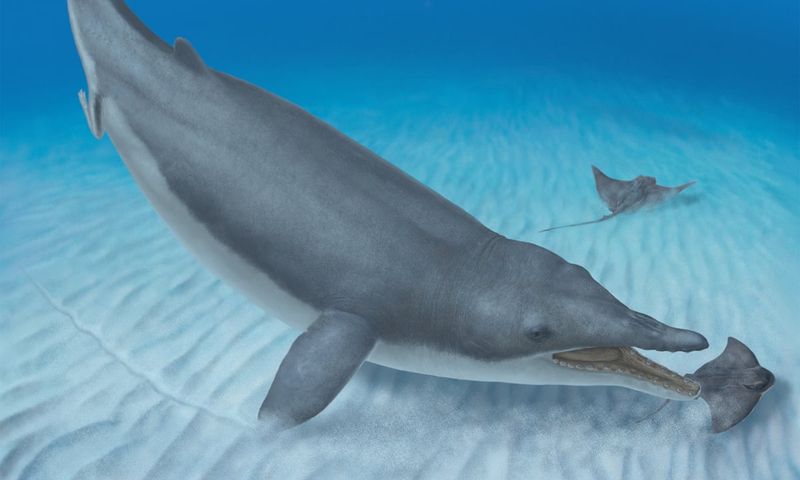
Mystacodon is recognized as one of the earliest known baleen whales, dating back to the late Eocene epoch, about 36 million years ago. Growing up to 13 feet, it exhibited early adaptations for filter feeding, despite retaining some primitive features.
This whale possessed both teeth and baleen-like structures, showcasing an evolutionary experiment in feeding strategies. Fossils found in South America provide valuable insights into the transition from toothed to baleen whales. Mystacodon’s unique adaptations highlight the complex evolutionary pathways that have shaped the diverse range of whale species seen today.
Parapontoporia
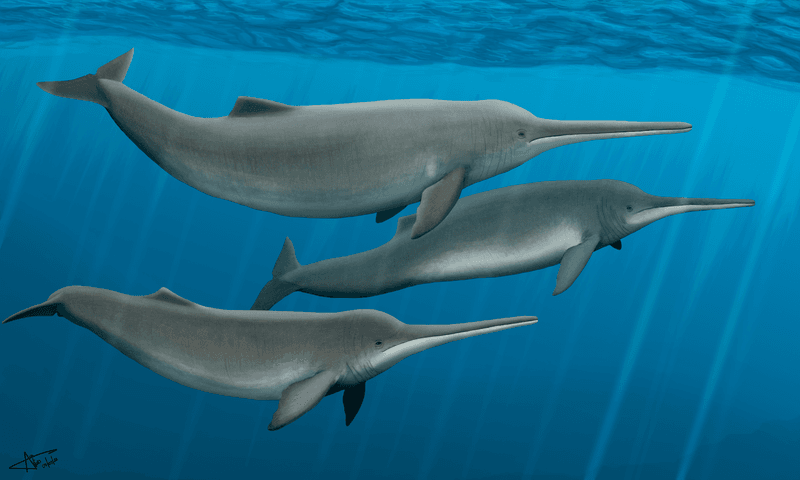
Parapontoporia, a lesser-known ancient whale, lived during the late Miocene to early Pliocene, approximately 10 to 5 million years ago. Despite its smaller size, around 10 feet, it represents a unique evolutionary branch of cetaceans.
Fossils found in the Pacific region reveal adaptations for coastal environments, such as a compact body and specialized teeth. The study of Parapontoporia contributes to understanding the diversity of prehistoric whale species and their ecological niches. Its distinct features underscore the evolutionary creativity that has characterized the cetacean lineage, providing a deeper appreciation for the complexity of whale evolution.

